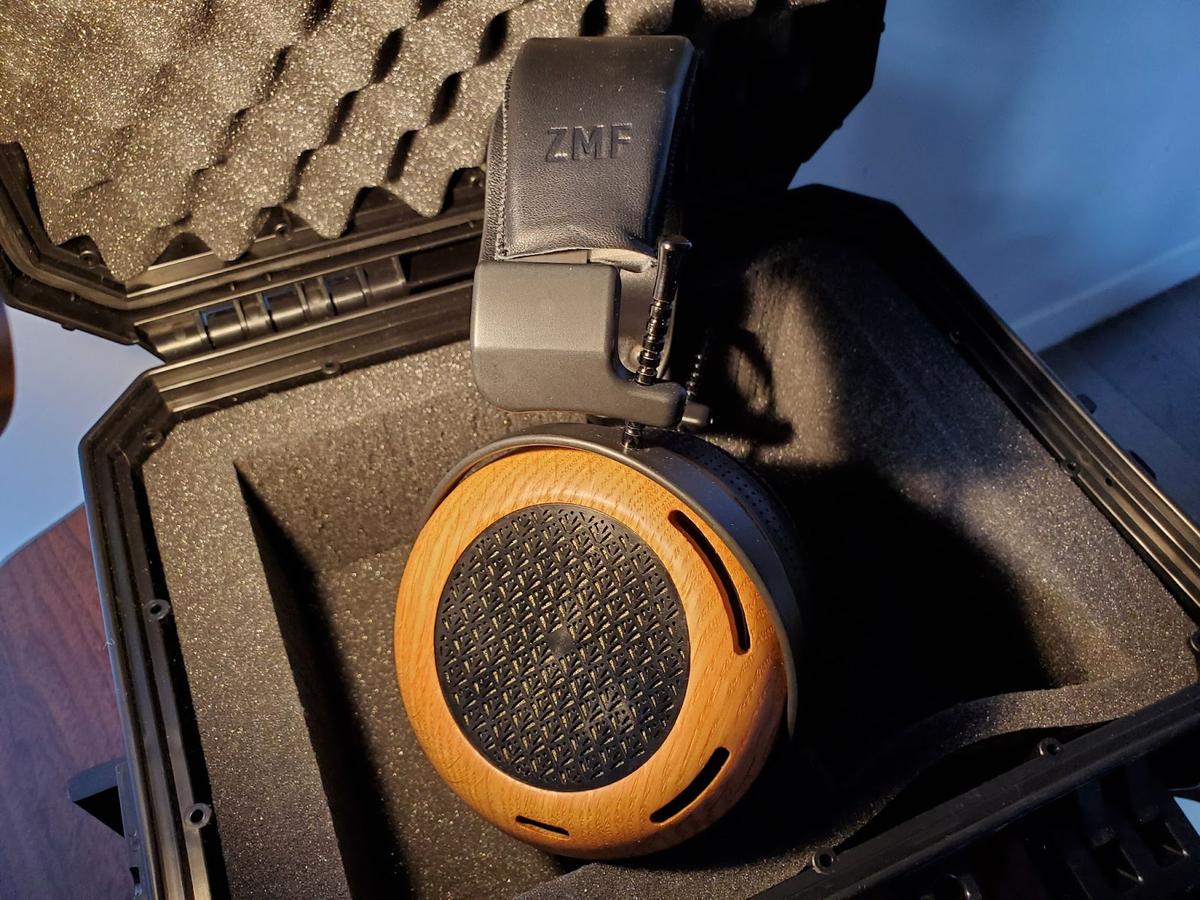With its first entry into the TOTL planar-magnetic headphone market, boutique manufacturer ZMF shot for the moon and ended up among the stars.
American boutique headphone manufacturer ZMF is one of the biggest indie success stories of the headphone industry. Beginning with making custom wood modifications for the Fostex T50rp, they’ve since built all manner of dynamic headphones.
Since their original Fostex mods, they haven’t built a product using proprietary planar-magnetic drivers. That is, until now. The Caldera are ZMF’s first proper venture into planar-magnetic headphones.
Priced around USD$3,500, this is the most expensive pair of headphones in ZMF’s current lineup. It sits in the TOTL bracket in the market, although not quite as pricey as, say, the USD$5,000 Focal Utopia or USD$6,000 Hifiman Susvara.
- Excellent resolution
- Well-proportioned headstage with superior imaging
- Realistic timbre
- Captivating, creamy tuning and presentation
- Beautiful craftsmanship and build quality
- Instrument separation is not top-tier
- Colorations make these inappropriate for certain genres
The Caldera’s most notable feature is the Caldera Asymmetric Magnet Structure (CAMS). The magnets on the ear side are tapered toward the diaphragm, streamlining the flow of air toward the ear.
This is combined with the Atrium Damping System used for tuning.
The result is a novel product. ZMF doesn’t make any outlandish performance claims, but the price indicates that ZMF believes they’re a strong contender for the TOTL “endgame” market.
Company Overview
Zach Mehrbach, the founder of ZMF, has a background as a guitar maker. He found his passion when people started buying his modification of the classic T50RP. Zach created a line of beautiful, hand-crafted premium wooden headphones from there.
Zach’s name is intimately tied to the ZMF brand in many ways, to an extent common among small boutique brands. Zach is extremely active in the audiophile community and on audio message boards like Head-Fi and Super Best Audio Friends. His responsiveness and affable personality have helped him grow his company.
Technical Specifications
- Form: Open-back, over-ear
- Drivers: 80mm planar-magnetic
- Impedance: 60 Ohm
- Sensitivity: 95 dB/mW
- Removable Cable: Yes
- Source Plug: 1/4in, 4-pin XLR
- Cup Jack: 3-pin mini-XLR
- Weight: 490-550g
Build
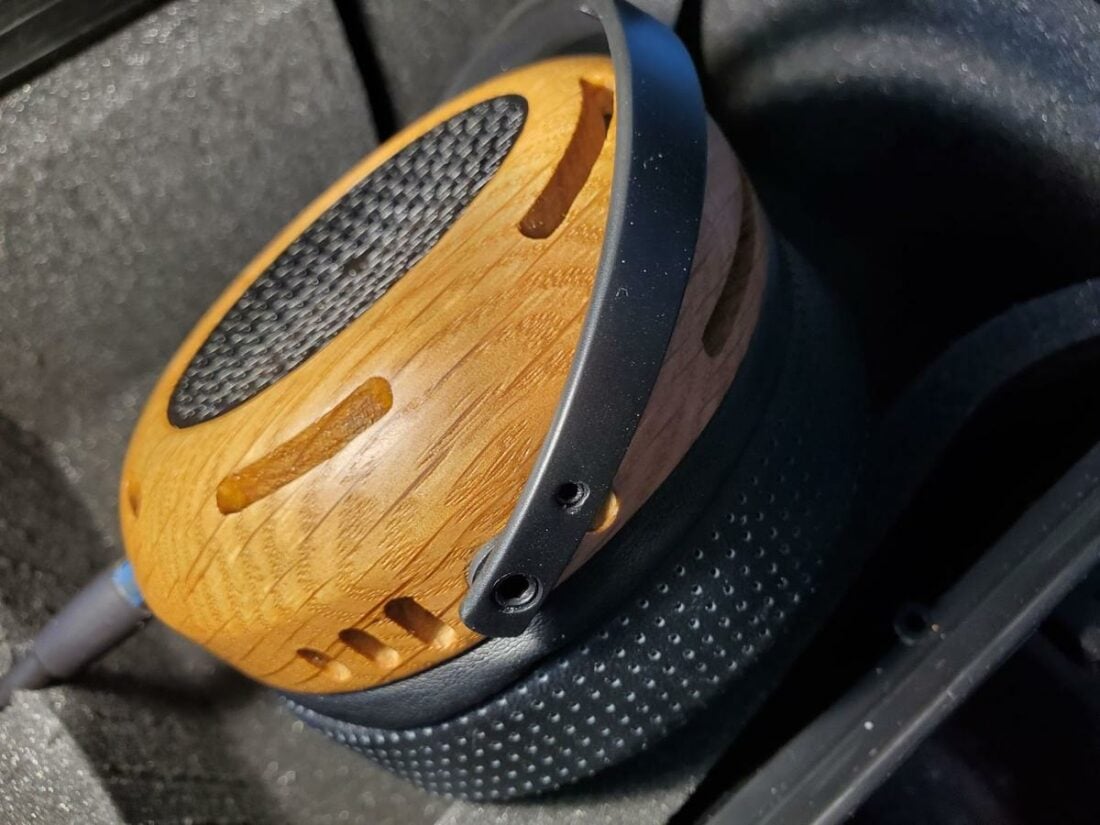
ZMF enjoys a reputation as the gold standard for premium headphone build quality. The people at ZMF respect wood, and that’s the charm of ZMF headphones – each pair has its own distinct visual characteristics, depending on the grain and condition of the wood used.
Some say you can’t understand the true appeal of a pair of ZMF headphones until you hold them.
The grill designs are also fanciful and unique. The Caldera have a repeated art deco-style volcano motif, evoking early 20th-century architecture.
The headband adjustment mechanism is pretty but needs functional improvements – it took quite a bit of force to change the headband position, and it slipped past the desired position more than once. However, once your adjustment is dialed in, it’ll stay put quite reliably.
The earcups rotate freely around the metal rod that connects them to the yoke and pivot inward and outward to a degree limited by a notch in the earcups. My pair developed a little squeak on one side when rotating the earcup, but this seems easily solvable with a little lubricant.
Comfort
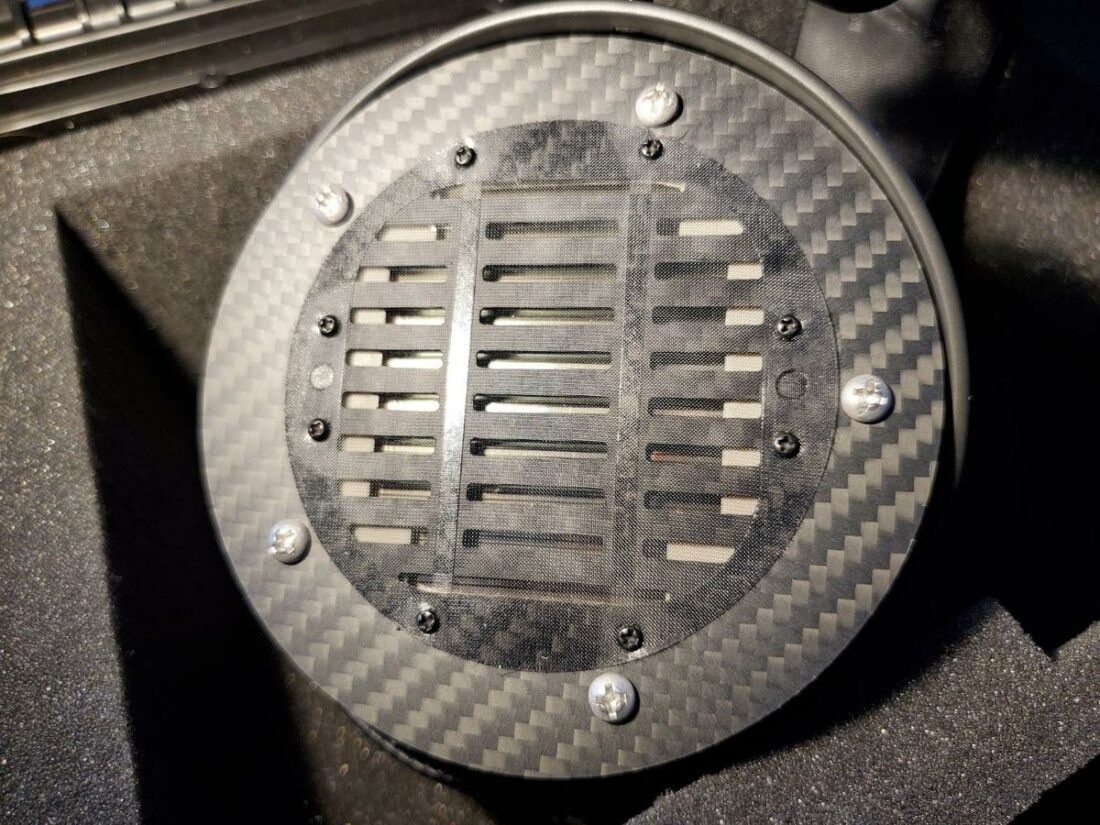
The Caldera are quite large and heavy, at 530g for my pair – although this is still lighter than the Audeze LCD-4 at 690g. I don’t typically have an issue with headphone weight, so the Caldera are not too heavy for me.
The Caldera’s earpads are huge and spacious, and I don’t imagine many people will have an issue with their ears touching. They’re also made of really nice materials, from suede to lambskin, and feel nice against the head.
The Caldera earpads are designed with less contact with the head, though, which can slightly increase the sensation of pressure compared to other ZMF earpads.
The headband is one of the most ingenious innovations from ZMF. Halfway between a suspension headband and a standard one, it creates no pressure points on the scalp and fits snugly and securely.
Sound
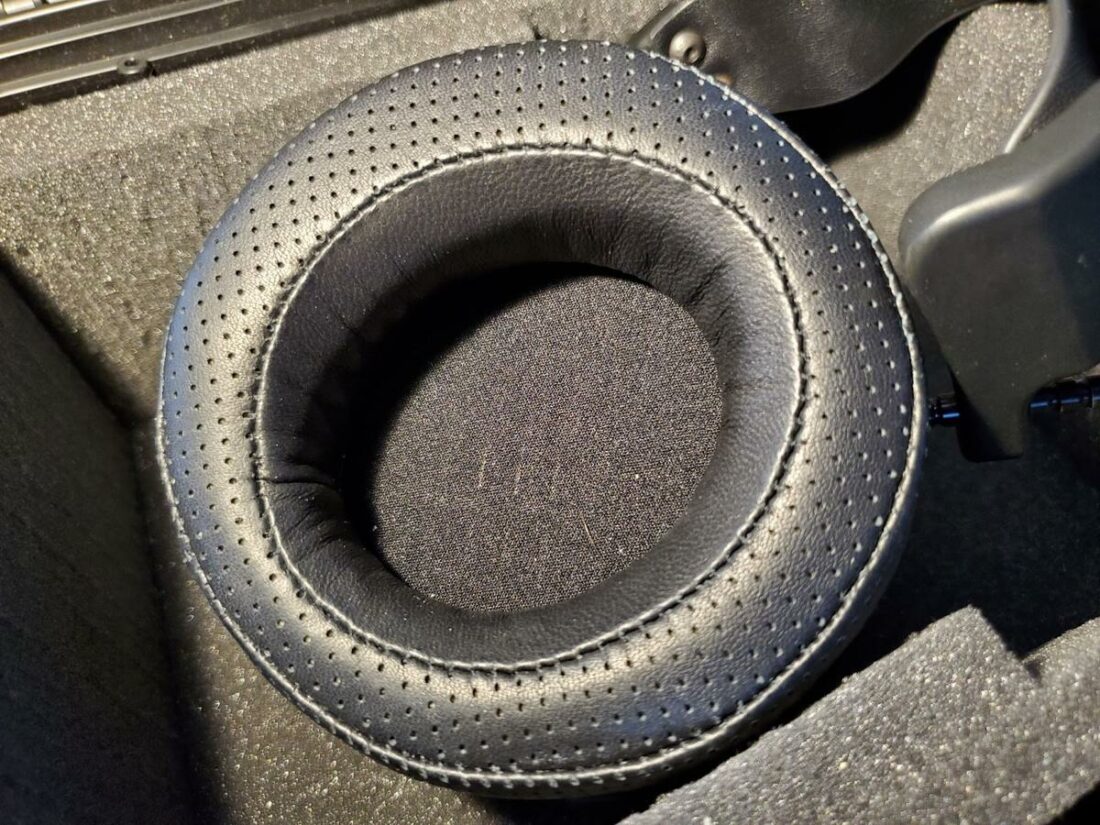
The ZMF “house sound” is a legendary presence in high-end headphones. This pleasant, warm sound prioritizes a creamy, lush midrange, and laid-back presentation. Even the fully open ZMF headphones still allow the wood cups to reflect some of the sound back to the listener, creating a unique, room-like soundstage – an effect most call “cup reverb.”
Owing to their planar drivers, the Caldera sound different from other ZMF headphones, but the philosophy behind their tuning is still full ZMF.
For better or worse, they aren’t quite neutral. The type of audiophile that prioritizes things like adherence to a frequency-response target (like Harman or diffuse-field) will find some deviations from neutral here.
Instead, these headphones bring a certain type of magic to the listening experience. They sound like headphones an instrument maker might design: beautifully resonant and creamy.
They also emulate some of the sonic characteristics of a pair of dynamic headphones. They are very fast and resolving, but they also achieve a tactility to the sound unusual among planar headphones.
The stock Caldera pads yield the best sound.
The suede pads thin out the sound a bit and reduce dynamics. Meanwhile, the thick pads add cup resonance, making for a warm and slow presentation that obscures detail. I like these pads, but only when I want to chill out, as they make the Caldera sound less technically capable.
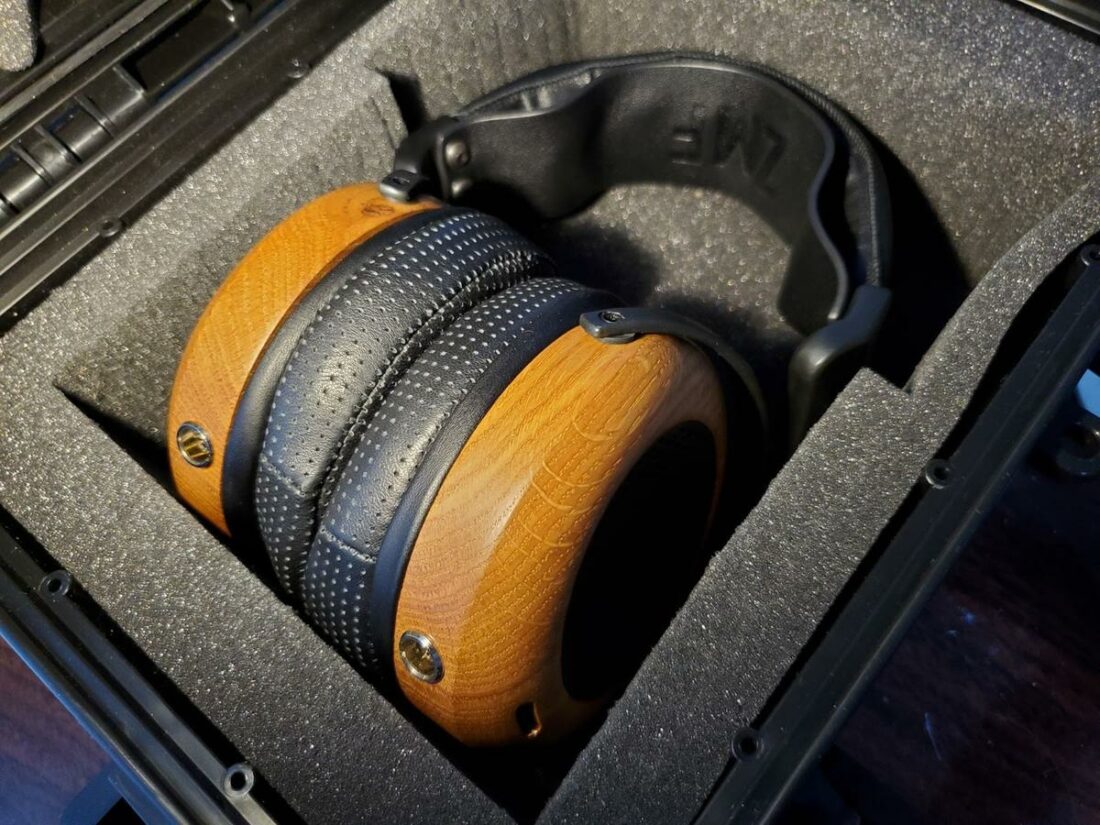
Technicalities and soundstage
In today’s TOTL market, there’s a very high bar to clear regarding technical performance. The Caldera clear it.
It’s incredible to see a company that once made T50rp mods deliver planar endgame performance on their first try.
The Caldera achieve their sound through technical achievements and a damping system. The goal, says Zach, was to attain the maximum possible airflow toward the ear, aiding the Caldera in achieving a dynamic, lively presentation.
As a result, the Caldera do not have a vast, expansive soundstage; instead, the soundstage seems to have a clearly delineated border. The stereo image is remarkably coherent: sounds are arranged in an arc in front of the head, with excellent depth.
Because of the cup reverb, some image cues are obscured, meaning the instruments aren’t separated as dramatically as they are with planar headphones like the Hifiman Susvara. This quality makes the stage very room-like.
The Caldera are ideal headphones for jazz, where you can really “hear the studio” with exquisite imaging. However, there seems to be a size limit to rooms they can convincingly portray; orchestral music can sound a bit cramped.
Bass
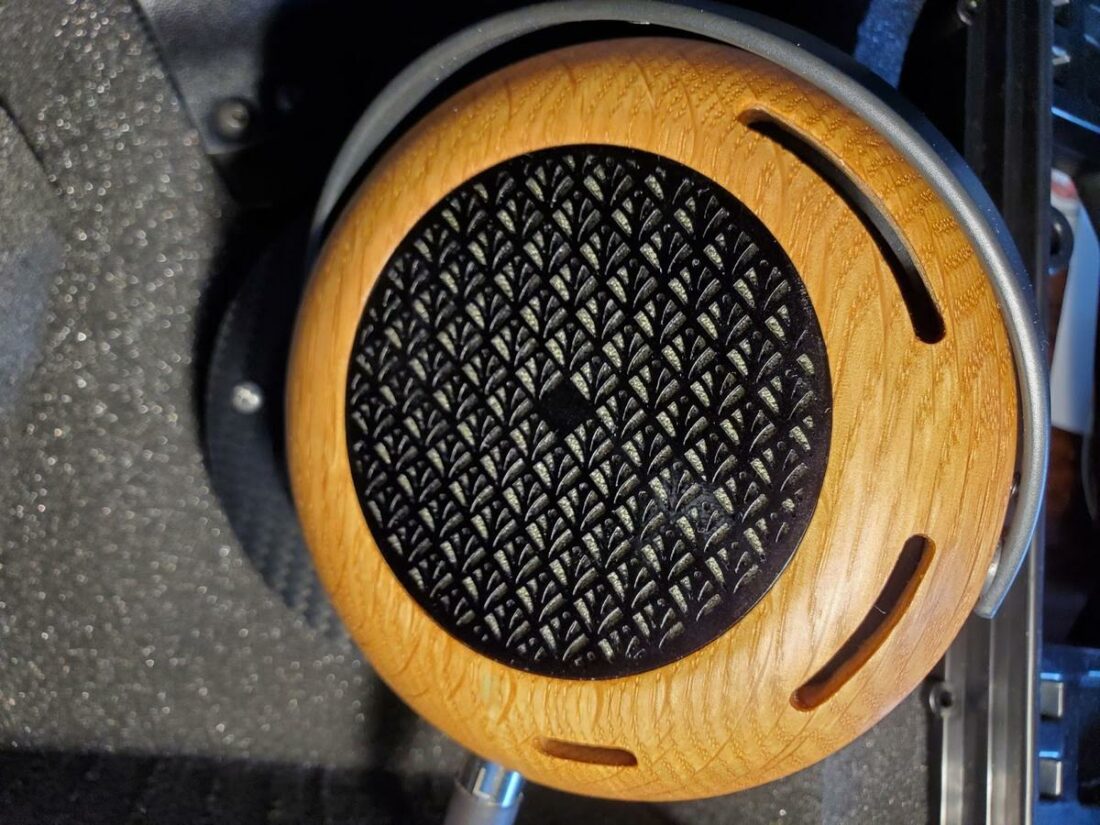
Unlike most planar-magnetic headphones, the Caldera are not flat in the bass. They even feature a slight measurable (and audible) roll-off below 40 Hz by a couple of dB.
Good bass extension is not particularly difficult to achieve with planar-magnetic drivers since there’s often a sealed pocket of air between the driver and the ear. Interestingly, ZMF chose a design that has roll-off.
The roll-off is not severe enough to be an issue for me.
The bass is not the fastest or most agile in its class, but it is beautifully presented, with a great combination of impact and texture. Bass guitar, in particular, is highly pleasing to listen to on the Caldera. Drums are also presented with great physicality and realism.
The bass of the Caldera strikes a delicate balance that sets it apart from its competition. It’s all intentional, splitting the difference between agility and aggression to achieve a sense of naturalism and simple “rightness.”
Midrange
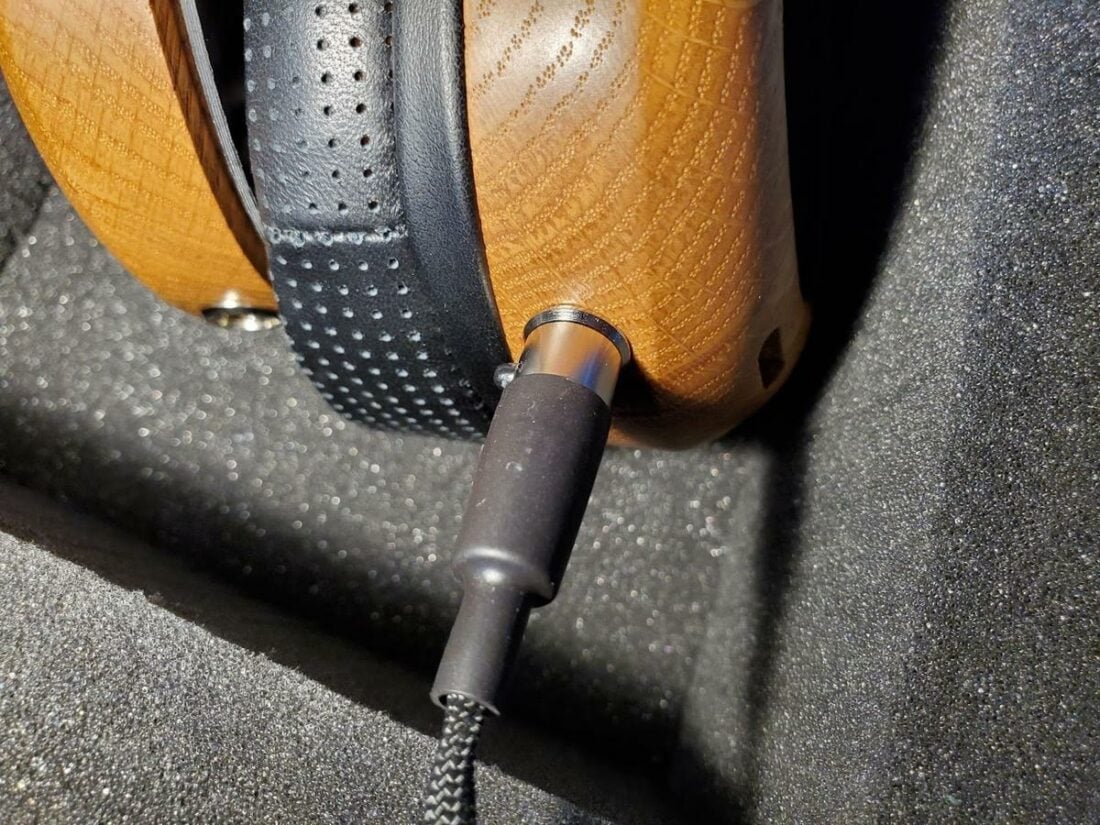
Zach has explained that his midrange tuning choices for the Caldera did not attempt to hit the Harman target but did take some inspiration from it. The result is an overall warm-tilted midrange with a presence boost.
The 1-2kHz dip yields a sense of spaciousness, and the dip from 3-4kHz leads to an unfatiguing, relaxed quality. The 2-3kHz bump gives some much-needed presence but can occasionally introduce a slight etch, especially with older recordings.
The result of this tuning is a creamy, liquid sound. Even though it’s not dead flat, I find it hard to fault the Caldera’s midrange. However, it does result in some genre restrictions.
For example, classical music sounds weird through the Caldera. Violins and other bowed string instruments sound slightly squished or robbed of their upper harmonics. A pair of headphones with a less thick midrange may be more appropriate for orchestral recordings.
Classic rock music sounds earth-shatteringly incredible through the Caldera. The lush midrange and bass make these headphones excel at well-recorded guitar music. I enjoyed records by Jimi Hendrix, Can, and even Animal Collective.
The dips in the midrange can cause vocals to be pushed back slightly in the mix. The vocal presentation is still vivid and convincing but less intimate than the Utopia.
Treble
The treble of the Caldera is beautifully resolving, with excellent extension and a smooth, effortless sound reminiscent of electrostatic headphones. It completely dodges the issues with treble harshness and haze that plagues the similarly-priced Hifiman HE1000SE.
The treble response is relaxed and euphonic. Lower- and mid-treble are quite laid-back, giving the headphones a smooth sound. The upper treble is gently boosted in keeping with the planar-magnetic tradition. In certain recordings, this can be problematic when hi-hats have excessive sparkle and insufficient body.
If the Caldera have a flaw in the treble, they may be slightly too smooth. They resolve detail effortlessly but sometimes struggle to portray the rough edges of the sound. This is audible in electric guitar, which, due to the laid-back low treble, can sound smoother and less abrasive than it should.
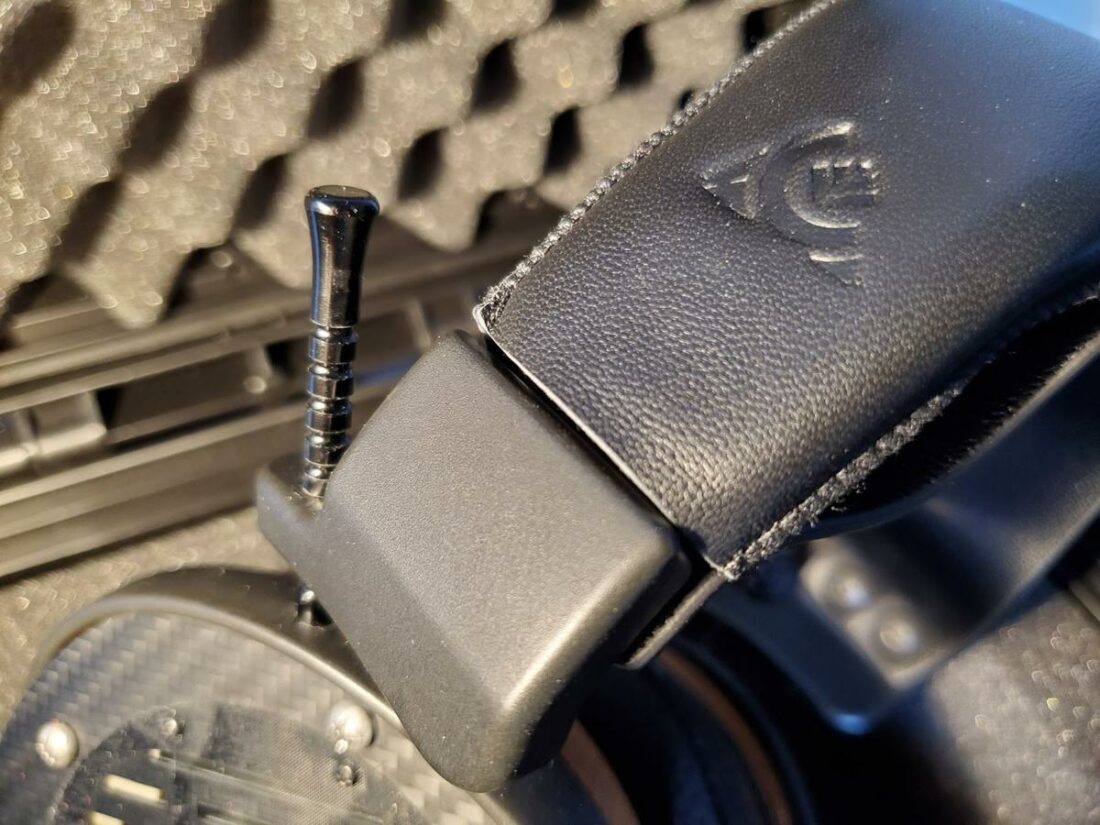
Where to buy
Conclusion
The ZMF Caldera are a very well-balanced offering from ZMF. They are well-tuned and very technically capable. They emulate some aspects of the performance of a pair of dynamic headphones while using a planar-magnetic driver, making them unique among planar headphones.
They imbue things with a relaxed, airy warmth that gives things a sense of spaciousness without sacrificing presence. Such colorations won’t play well with every genre (such as classical), but the sound works well for its intended purpose. I don’t wish for a market where every product attempts to hit the same neutral target.
The Caldera offer a captivating, involving presentation and a highly musical, well-composed listening experience. It was a true joy to experience the Caldera, and if I had more money in my pocket, I’d buy a pair myself.
The Caldera are a leading contender for the TOTL planar flagship title.
